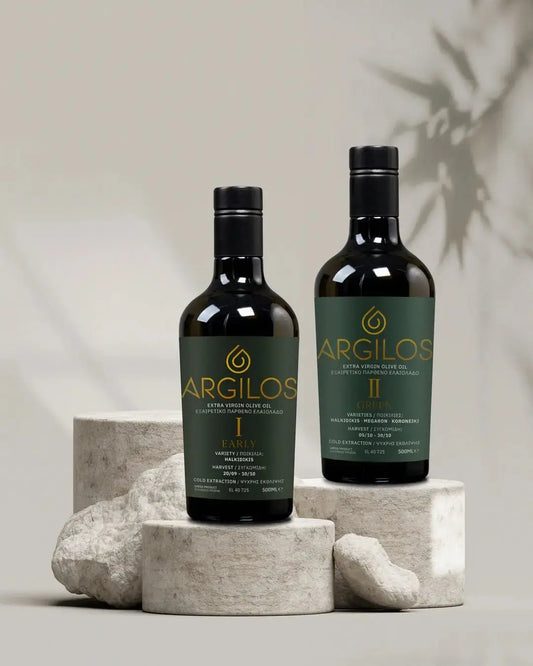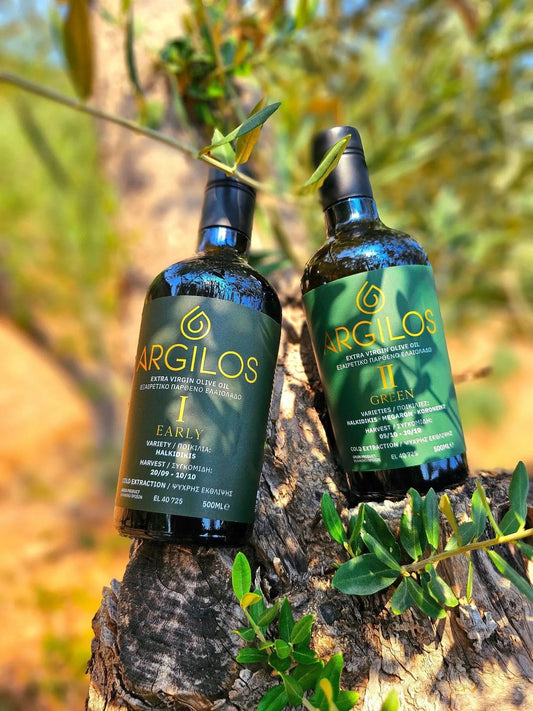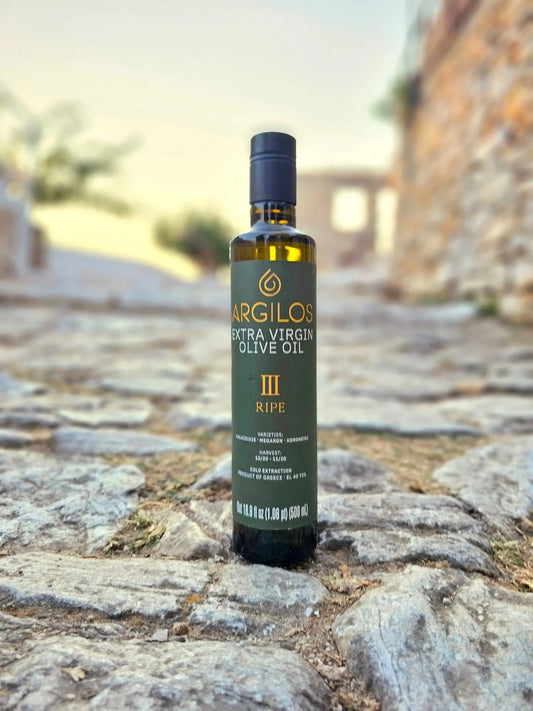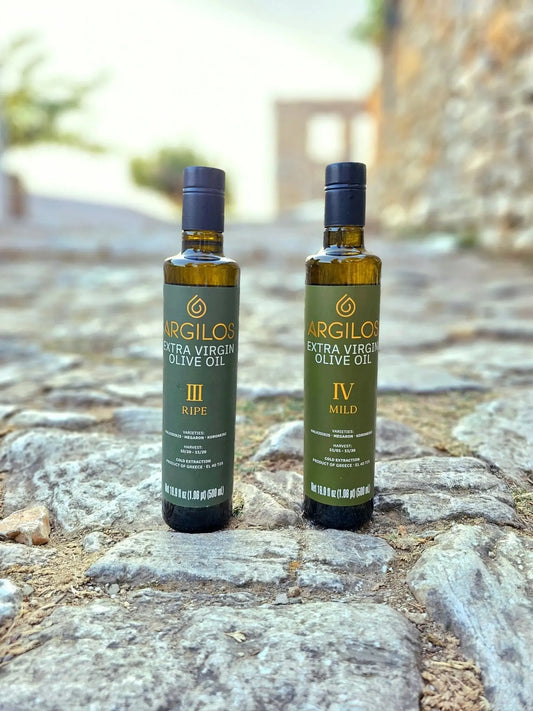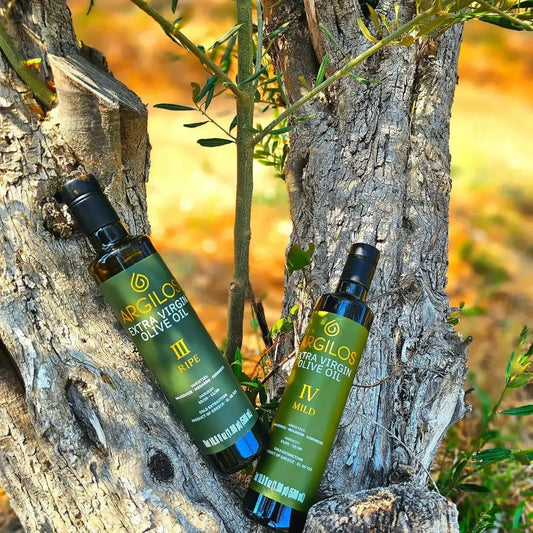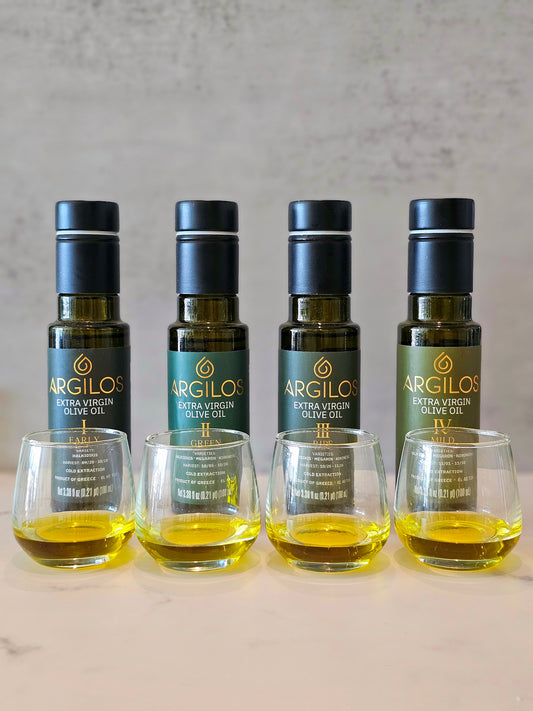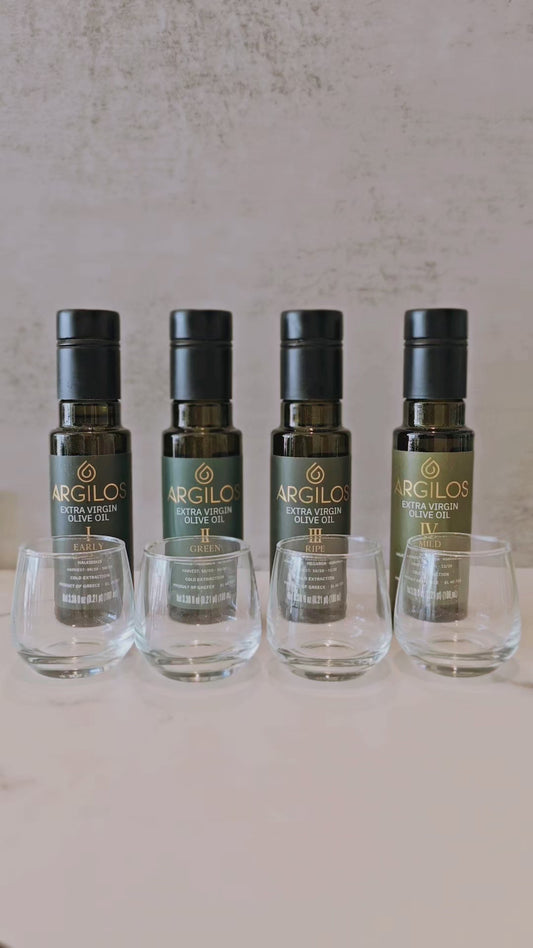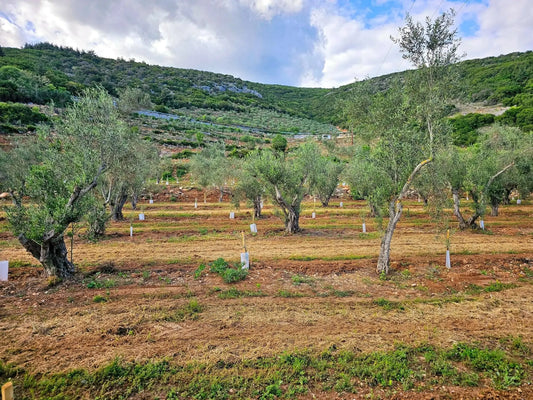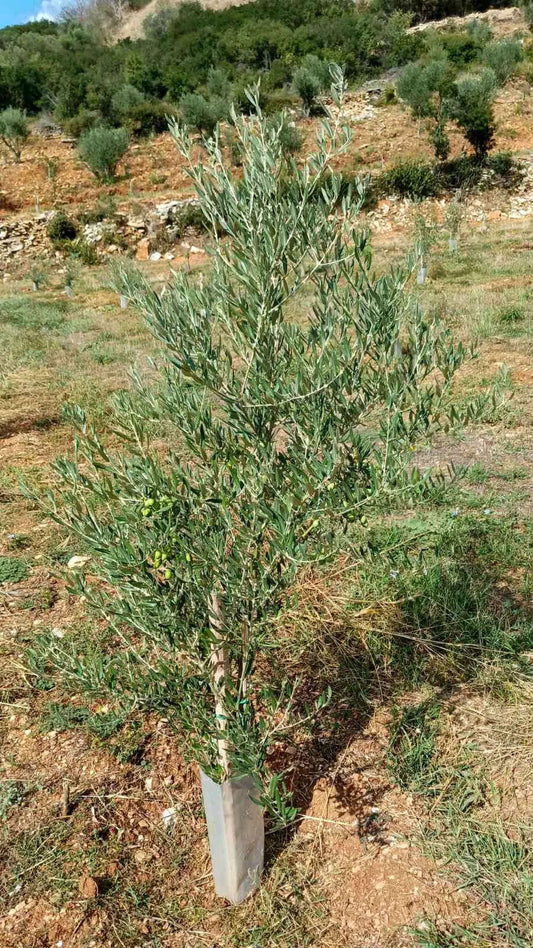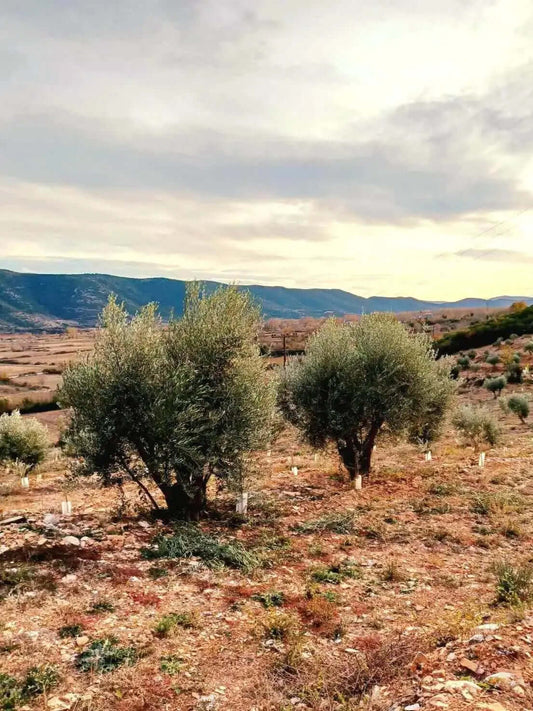Can You Use Olive Oil for Frying? Benefits, Best Practices, and Tips
Share
Frying with olive oil refers to the culinary practice of cooking food in hot olive oil, either through shallow (pan frying) or deep immersion (deep frying). Olive oil is a liquid fat obtained from olives, the fruit of Olea europaea, and is widely used in Mediterranean diets. It contains a high proportion of monounsaturated fatty acids (primarily oleic acid) and natural antioxidants, making it a stable and health-conscious choice for various cooking techniques, including frying.
Scientific studies and food safety authorities confirm that olive oil, including extra virgin olive oil, can be safely used for frying. According to a review published in Comprehensive Reviews in Food Science and Food Safety (2010), olive oil demonstrates superior oxidative stability compared to many seed oils when heated. Its smoke point typically ranges from 190°C to 220°C (374°F to 428°F), depending on refinement, which is well above common pan-frying temperatures.
Frying with olive oil is a traditional method in Southern Europe, where it is used to prepare vegetables, fish, and meat. It forms a protective crust around food, reducing oil absorption and preserving flavor and nutrients. Unlike common misconceptions, olive oil does not become harmful when heated within its smoke point range and is less prone to forming harmful compounds like trans fats compared to refined seed oils.
Health Benefits and Risks of Frying with Olive Oil

Health Benefits
Frying with olive oil—particularly extra virgin olive oil—offers several health advantages due to its unique composition. Olive oil is high in monounsaturated fats, primarily oleic acid, which has been associated with improved heart health. It also contains natural antioxidants, such as vitamin E and polyphenols, that help reduce inflammation and oxidative stress in the body.
A study published in Food Chemistry (2015) found that vegetables fried in extra virgin olive oil showed increased phenolic content, suggesting that the oil can enhance the nutritional value of certain foods when used properly. Additionally, olive oil’s relative oxidative stability during heating makes it more resistant to breakdown than polyunsaturated-rich oils like sunflower or soybean oil.
Risks and Misconceptions
One common misconception is that frying with olive oil is dangerous due to its smoke point. However, most frying methods—such as pan frying at 160–190°C (320–375°F)—do not exceed the smoke point of even extra virgin olive oil. The risk of generating harmful compounds (e.g., acrolein or trans fats) is low when olive oil is used within its thermal stability range.
Overheating any oil beyond its smoke point can lead to degradation and release of free radicals, regardless of the oil type. To minimize this risk, proper temperature control and avoidance of reusing overheated oil are essential practices.
How to Fry with Olive Oil (Step-by-Step)
Frying with olive oil is a common technique in Mediterranean cooking that can be adapted for both pan frying and deep frying. The process involves heating olive oil to a controlled temperature to cook food evenly while retaining moisture and flavor. Below are two step-by-step methods for frying with olive oil, each suited for different types of food.

Pan Frying with Olive Oil
Pan frying is a shallow cooking technique ideal for vegetables, eggs, fish, or thin cuts of meat. It requires only a thin layer of oil and moderate heat.
- Step 1: Choose the Right Olive Oil
Use extra virgin olive oil for its flavor and antioxidant content, or refined olive oil if cooking at higher temperatures. Both are suitable for pan frying.
- Step 2: Preheat the Pan
Heat the pan over medium heat for 1–2 minutes before adding the oil. This allows for more even oil distribution and prevents sticking.
- Step 3: Add Olive Oil to the Pan
Pour just enough oil to lightly coat the surface. Avoid excess oil to maintain crisp texture and avoid sogginess.
- Step 4: Heat the Oil to the Right Temperature
Wait until the oil shimmers but does not smoke. This is typically around 160–180°C (320–356°F). You can test with a small breadcrumb—if it sizzles gently, the oil is ready.
- Step 5: Fry and Turn Sparingly
Place food in the pan and let it fry undisturbed for a few minutes before turning. This ensures an even, golden crust.
- Step 6: Drain and Serve
Remove food with tongs or a spatula and let it rest on paper towels to absorb excess oil.
Deep Frying with Olive Oil
Deep frying submerges food in hot oil, ideal for dishes like croquettes, tempura, or fritters. Olive oil can safely be used for deep frying when handled correctly.
- Step 1: Use a Pot with High Sides
Select a deep, heavy-bottomed pot and fill it with olive oil to about one-third full. Leave space to prevent overflow when food is added.
- Step 2: Select a Neutral or Mild Extra Virgin or Light Olive Oil
Use light olive oil for a more neutral flavor, or extra virgin if you prefer its robust taste. Ensure the oil is fresh and hasn’t been reused multiple times.
- Step 3: Heat to the Optimal Temperature
Use a thermometer to heat the oil to 175–190°C (347–374°F). Avoid letting the oil exceed 200°C (392°F) to prevent smoke and breakdown.
- Step 4: Fry in Batches
Add small amounts of food at a time to maintain the oil temperature. Overcrowding cools the oil and leads to greasy food.
- Step 5: Remove and Drain
When golden and crisp, use a slotted spoon to transfer food to paper towels or a wire rack. Let the oil cool before straining and storing for reuse (up to 2–3 times).
FAQs About Frying with Olive Oil
1. Can you use olive oil to fry things?
Yes. Olive oil is a stable, flavorful option for frying a variety of foods. It performs especially well at medium to moderately high heat, making it a reliable choice for frying vegetables, proteins, and even breaded items.
2. Can you fry stuff in olive oil without it smoking?
Yes, as long as you keep the temperature under the oil’s smoke point. Extra virgin olive oil has a smoke point of approximately 190°C (374°F), while refined olive oil can go up to 220°C (428°F). Use a thermometer or watch for shimmering to control heat.
3. Can I pan fry with olive oil every day?
Yes, daily pan frying with olive oil is common in Mediterranean diets. It is considered one of the healthiest oils due to its antioxidant properties and high levels of monounsaturated fats. Use fresh oil each time and avoid reusing burned oil.
4. Can you fry using olive oil and still keep the flavor?
Yes. Frying with olive oil not only preserves but can enhance flavor, especially with extra virgin olive oil, which carries fruity, peppery, or grassy notes. It complements dishes rather than overpowering them.
5. Can you mix olive oil with other oils for frying?
Technically, yes—but it's not recommended. Mixing oils with different smoke points and fat compositions can reduce the stability and performance of the olive oil. For optimal results, use olive oil on its own and monitor the heat closely.
References
- Chiou, A., Kalogeropoulos, N., Boskou, G., & Salta, F. N. (2017). Virgin olive oil as frying oil. Comprehensive Reviews in Food Science and Food Safety, 16(4), 632-646. https://doi.org/10.1111/1541-4337.12268
- De Alzaa, F., Guillaume, C., & Ravetti, L. (2018). Evaluation of chemical and physical changes in different commercial oils during heating. Acta Scientific Nutritional Health, 2(6), 2-11.
- Ramírez-Anaya, J. P., Samaniego-Sánchez, C., Castañeda-Saucedo, M. C., Villalón-Mir, M., & de la Serrana, H. L. G. (2015). Phenols and the antioxidant capacity of Mediterranean vegetables prepared with extra virgin olive oil using different domestic cooking techniques. Food Chemistry, 188, 430-438. https://doi.org/10.1016/j.foodchem.2015.04.124
- Kalogeropoulos, N., Chiou, A., Ioannou, M., Karathanos, V. T., Hassapidou, M., & Andrikopoulos, N. K. (2007). Recovery and distribution of natural antioxidants (α-tocopherol, polyphenols, and terpenic acids) after pan-frying of Mediterranean finfish in virgin olive oil. Food Chemistry, 100(2), 509-517.
- Perkins, E. G., & Erickson, M. D. (Eds.). (1996). Deep frying: Chemistry, nutrition, and practical applications. AOCS Press.
- Santos, C. S., Cruz, R., Cunha, S. C., & Casal, S. (2013). Effect of cooking on olive oil quality attributes. Food Research International, 54(2), 2016-2024.
- Estruch, R., Ros, E., Salas-Salvadó, J., Covas, M. I., Corella, D., Arós, F., ... & Martínez-González, M. A. (2018). Primary prevention of cardiovascular disease with a Mediterranean diet supplemented with extra-virgin olive oil or nuts. New England Journal of Medicine, 378(25), e34. https://doi.org/10.1056/NEJMoa1800389
- North American Olive Oil Association. (2025). Smoke point not a reliable indicator of cooking oil stability. About Olive Oil. https://www.aboutoliveoil.org/evoo-most-stable-cooking-oil
- Tomassetti, M., Campanella, L., Aureli, T., Marini, F., Volpe, G., & Nanni, F. (2013). Biosensors for monitoring the isothermal breakdown kinetics of peanut oil heated at 180°C. Comparison with results obtained for extra virgin olive oil. Food Chemistry, 140(4), 700-710. https://doi.org/10.1016/j.foodchem.2012.10.131
- Akil, E., Castelo-Branco, V. N., Costa, A. M., do Amaral Vendramini, A. L., Calado, V., & Torres, A. G. (2015). Oxidative stability and changes in chemical composition of extra virgin olive oils after short-term deep-frying of french fries. Journal of the American Oil Chemists' Society, 92(3), 409-421.
- Mazzocchi, A., Leone, L., Agostoni, C., & Pali-Schöll, I. (2019). The secrets of the Mediterranean diet. Does [only] olive oil matter? Nutrients, 11(12), 2941. https://doi.org/10.3390/nu11122941
- Flynn, M. M., Tierney, A., & Itsiopoulos, C. (2023). Is extra virgin olive oil the critical ingredient driving the health benefits of a Mediterranean diet? A narrative review. Nutrients, 15(13), 2916. https://doi.org/10.3390/nu15132916
- Olive Wellness Institute. (2024). What does smoke point tell us about EVOO? Olive Wellness Institute. https://olivewellnessinstitute.org/article/what-does-smoke-point-tell-us-about-evoo/
- Bastida, S., & Sanchez-Muniz, F. J. (2015). Frying: A cultural way of cooking in the Mediterranean diet. In V. R. Preedy & R. R. Watson (Eds.), The Mediterranean diet: An evidence-based approach (pp. 207-218). Academic Press.
- Boskou, D. (2015). Olive fruit, table olives, and olive oil bioactive constituents. In D. Boskou (Ed.), Olive and olive oil bioactive constituents (pp. 1-30). AOCS Press.
Disclaimer: This article is for educational purposes only and should not replace professional culinary or nutritional advice. Always follow proper food safety guidelines when frying foods, and consult with healthcare providers if you have specific dietary concerns or health conditions.

